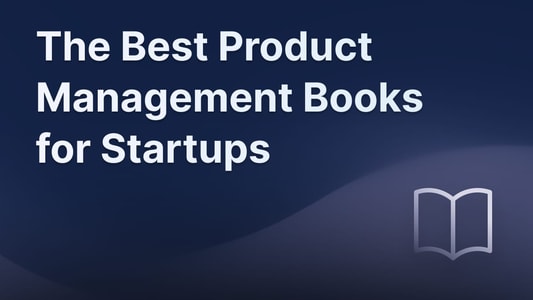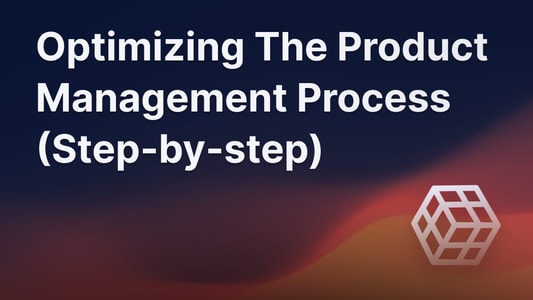Blog Customer FeedbackTop 7 Alternatives to NPS for Startups to Measure Customer Experience
Top 7 Alternatives to NPS for Startups to Measure Customer Experience
Looking for NPS alternatives to better measure your customer satisfaction? In this blog, we'll go over the 7 top customer experience KPIs that you can use together or instead of NPS. Let's get into it!

Have you ever felt that Net Promoter Score (NPS) does not provide the whole picture? You're not alone.
While NPS can tell you how likely your customers will recommend your startup, it doesn't cover everything about the customer experience.
This gap can cause you to miss out on crucial life-or-death insights for your business. But don't worry, we've got you covered.
In this blog, I'll introduce you to 7 powerful NPS alternatives that can give you a more comprehensive view of your customer experience. Let's get started! 👇
TL;DR - Top NPS Alternatives:
- Customer Satisfaction Score (CSAT): Quick, asks how satisfied customers are on a scale of 1-5. Use it to get instant feedback.
- Customer Effort Score (CES): Measures effort needed to interact with a product/service. Aims to understand customer journey friction.
- Voice of Customer (VoC): Gathers customer feedback across platforms. Offers a comprehensive view of customer thoughts and feelings.
- Product Engagement Score (PES): A number showing customer interaction with a product. Tracks usage patterns, helping improve features.
- Customer Churn Rate (CCR): Shows the rate at which customers leave. Critical for subscription-based services, indicating satisfaction and loyalty.
- Customer Retention Rate (CRR): Measures how many customers stay over time. Opposite of churn, it signals customer loyalty.
- Customer Lifetime Value (CLV): Estimates total revenue a customer will generate. Helps in budgeting for customer acquisition and retention.
What is Net Promoter Score (NPS)?

Net Promoter Score (NPS) is a customer loyalty metric that measures how likely customers are to recommend a company's products or services to others.
It's calculated based on responses to a single question:
On a scale from 0 to 10, how likely are you to recommend our company/product/service to a friend or colleague?
Respondents are categorized into three groups:
- Promoters (9-10)
- Passives (7-8)
- Detractors (0-6)
The NPS is the of Promoters minus the percentage of Detractors, giving a score from -100 to +100. The higher, the better.
NPS = (Percentage of Promoters) − (Percentage of Detractors)
🥇 Featurebase - the all-in-one survey and feedback collection tool, best value for money.
The Limitations of The NPS Score
True, NPS is often regarded as the key metric for customer experience by lots of companies.
But despite its widespread use, it comes with limitations that all businesses should consider to avoid making decisions based on insufficient information.
- Too general
An NPS score simply reveals whether customers are likely to recommend you or not. It leaves you guessing about the reasons behind their willingness to refer your brand to others. To uncover these vital insights, you'll need to conduct additional surveys and questionnaires, diving deeper into the specifics of areas for improvement. - Ignores customer importance
NPS treats all customer responses equally and doesn't account for the different levels of importance of each customer. Not all feedback carries the same weight in terms of business impact. The opinion of a high-spending, long-term customer might be more valuable for your strategy than that of a one-time purchaser, but NPS doesn't distinguish between the two. - Affected by recent experiences
If a customer has just had a particularly good or bad interaction, their score might reflect their immediate reaction rather than their overall opinion of your product. NPS can't accurately track customers' consistent long-term views, which you actually need to understand their satisfaction. - Doesn't provide actionable insights
Lastly, NPS itself doesn't actually provide any clear directions for improvement. While it can alert you to potential problems (if your score is lower than expected), it doesn't specify what aspects of your product or service need enhancement. This lack of actionable feedback makes it challenging to implement specific changes that could directly boost customer satisfaction and loyalty.
All in all, you should combine NPS with other customer success metrics to gain a deeper understanding of customer experience.
The 7 Best Alternatives to Net Promoter Score
Now that you know the downsides of NPS and why you should use it together with other metrics, let's take a look at them.
Here are seven of the most powerful and popular customer satisfaction KPIs you should combine with NPS.
1. Customer Satisfaction Score (CSAT)
The Customer Satisfaction Score (CSAT) is a straightforward measure that asks customers to rate their satisfaction with your service or product.
Usually, with just one simple question, such as "How satisfied were you with your experience?"
Responses range from 1 (very unsatisfied) to 5 (very satisfied).
To calculate your total CSAT score, divide the number of respondents who selected 4 and 5 by the total number of respondents. You can use the total sum to equally benchmark results over time.
CSAT = number of positive answers (4 & 5) / total respondents
What makes CSAT stand out is its ability to capture immediate (transactional) feedback following an interaction or purchase.
It's perfect for combining with NPS - instead of just showing you how likely customers are to recommend you, it reveals their feelings about a specific process or part of your product.
2. Customer Effort Score (CES)
The Customer Effort Score (CES) measures the effort your customers have to put in to interact with a specific part of your product or service.
This could be either buying a product, getting extra seats for their account, or accessing billing information.
A typical question for CES would be "How easy was it to handle your issue?" with responses ranging from 1 (very easy) to 5.
To calculate the total CES, divide the sum of scores by the total number of responses. So, if your total score is 300 and you received 50 responses, the total CES is 6.
CES = total sum of scores / number of survey responses
Use CES together with NPS to understand the friction points in the customer journey.
3. Voice of Customer (VoC)
Voice of Customer (VoC) means listening to what your customers are saying across different platforms. It gathers everything from survey answers and support chats to social media comments.
This approach gives you a full picture of your customers' thoughts and feelings about your product or service.
VoC surveys can be both quantitative and qualitative:
- Quantitative questions are easily calculable (on a 1-5 scale) and may be as simple as, “Did our product meet your expectations?” or "How likely are you to use our service again?" The feedback is easy to run through Excel and other spreadsheets.
- Qualitative (open-ended) questions can, in turn, give much insight into the "why?" behind customer feelings and decisions. Examples could be, "What did you like most about our product?" or "How can we improve your experience?
Understanding your customers this way helps you see not just what they like or don't like but also why they feel that way. This deep dive into customer feedback can guide you in making changes that really matter to them.
4. Product Engagement Score (PES)
The Product Engagement Score (PES) is a single number that shows how involved your customers are with your product. Tracking how often and how deeply people use your product is highly relevant, especially for SaaS.
For instance, it might track how many features they use, how often they log in, or how much time they spend with the product.
PES is great because it shows you not just IF customers are using your product, but HOW they're using it.
This can help you understand which features are hitting the mark and which ones might need a rethink. By keeping an eye on PES, you can spot trends, figure out what keeps people coming back, and make your product even better.
5. Customer Churn Rate (CCR)
Customer Churn Rate (CCR) is the rate at which customers cancel their subscriptions or stop using your service over a specific period. It's one of the key metrics for understanding customer retention and loyalty, especially for SaaS businesses that rely on subscription models and recurring revenue.
To calculate the churn rate, you divide the number of customers lost (churned) during the period by the total number of customers at the start of the period, then multiply by 100 to get a percentage. Many finance tracking tools, like Stripe or ChartMogul, do this automatically.
CCR = (Customers beginning of period - customers end of period) / customer beginning of period
In SaaS, a low churn rate is critical for long-term success and product-led growth. High churn indicates issues with customer satisfaction, product-market fit, or the effectiveness of ongoing support.
Because acquiring new customers is often more costly than retaining existing ones, SaaS companies should always focus on minimizing churn through improvements in customer service, product features, and user experience.
6. Customer Retention Rate (CRR)
Customer Retention Rate (CRR) measures the percentage of customers who stay with your company over a specific time period. It's essentially the opposite of the churn rate, focusing on the positive aspect of customer loyalty.
To calculate CRR, subtract the number of new customers acquired during the period from the total number of customers at the end of the period, then divide by the total number of customers at the start of the period and multiply by 100.
CRR = (ending customers - new customers) / beginning customers
CRR is a key metric for businesses like SaaS, where long-term relationships and recurring revenue are essential. A high retention rate signals strong customer satisfaction and loyalty, indicating that your product continues to meet and exceed customer needs over time.
7. Customer Lifetime Value (CLV)
Customer Lifetime Value (CLV) is an estimate of the total value you can expect from a single customer throughout their relationship with your company.
This metric combines the average purchase value and customer lifespan to estimate the total revenue a customer will generate for you.
We suggest hooking up a finance tracking tool to see this metric automatically. You can also estimate it using this formula:
CLV = (Customer Value * Average Customer Lifespan)
A higher CLV suggests that your company is successful in maintaining long-lasting customer relationships, which is beneficial as acquiring new customers is costly.
It's one of the key metrics for SaaS because knowing the potential total value of customers tells you a lot. It can help you estimate how much you can invest in acquiring new customers and retaining existing ones. Keeping an eye on the historical trend of CLV can also give you a clue about the general customer satisfaction level.
How to run customer satisfaction surveys?
Running different types of surveys is super easy by using survey tools that integrate well with your customer feedback system and CRM.
Featurebase is one such tool. It helps automate the distribution and analysis of your surveys with intuitive design and rich features.
You can run 7+ different types of surveys, ranging from NPS and CSAT to open-ended questions. You can also target specific customer groups and sync your users data always to see who's behind the answers.

The dedicated statistics page conveniently visualizes results. You can also connect your users' data to understand exactly who's behind the answers.

Conclusion
To wrap up, while NPS is a popular method for measuring customer loyalty, it's not the only tool in the toolbox. We've explored 7 robust alternatives that can provide deeper insights into different parts of customer experience.
Remember, the goal is not just to gather data but to use it to make meaningful changes that resonate with your customers.
Tools like Featurebase are lifesavers for running surveys and collecting feedback. You can create different types of surveys, target specific customer groups, and conveniently visualize results - all with a beautiful and intuitive design.
Featurebase comes with a Free Plan, and you can automatically migrate over from any existing tools in seconds, so there's no downside to trying it. 👇
Run surveys and collect feedback with Featurebase for free →
The simple feedback tool with feature voting for your customer feedback. Built-in the 🇪🇺.
© 2024 Featurebase. All rights reserved.


